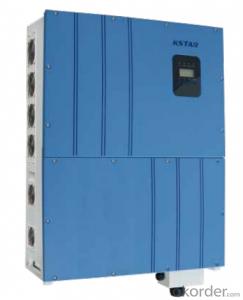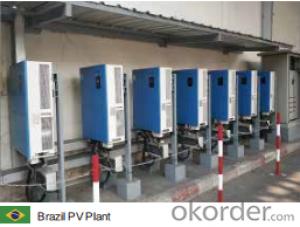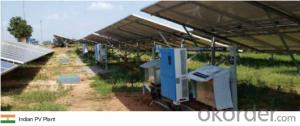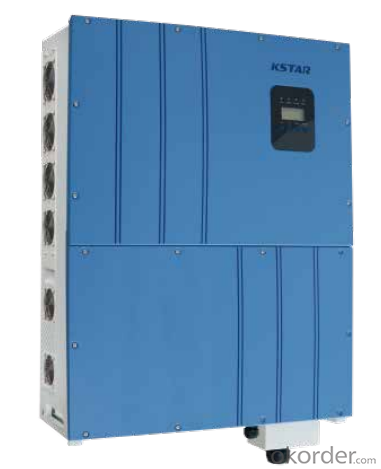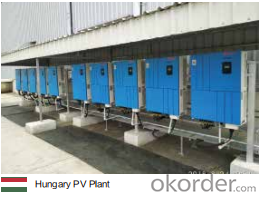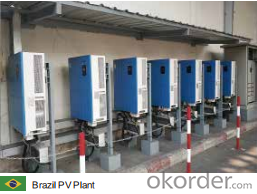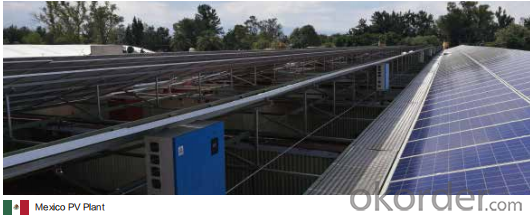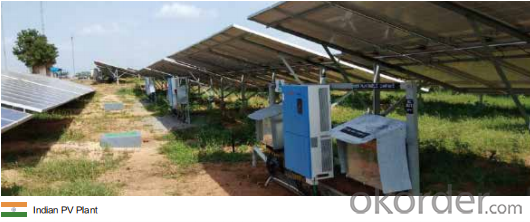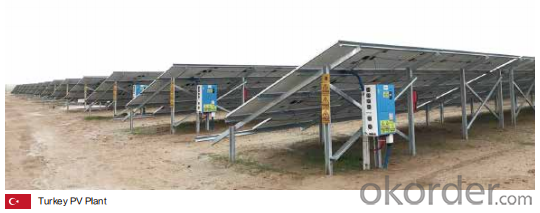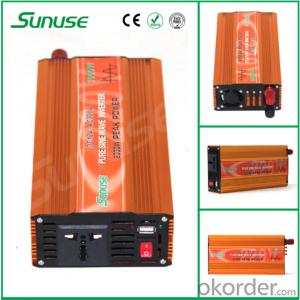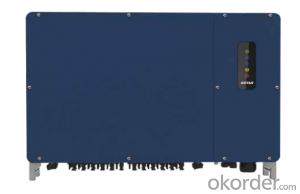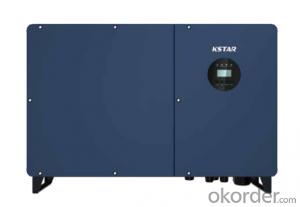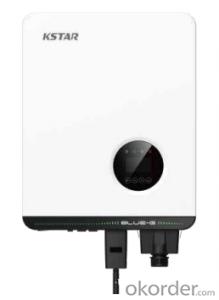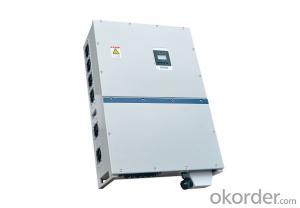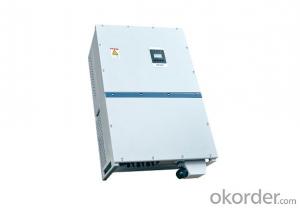Solar String Grid-Tied PV Inverter KSG-50K / KSG-60K
- Loading Port:
- China main port
- Payment Terms:
- TT OR LC
- Min Order Qty:
- 50 pc
- Supply Capability:
- 15000 pc/month
OKorder Service Pledge
OKorder Financial Service
You Might Also Like
Specification
Product Description:
★Max. PV voltage up to 1000V Three MPPT
★DC/AC Type Ⅱ SPD optional Positive DC fuse optional
★High efficiency up to 98.6% String monitoring optional
★Reactive power controller LVRT/HVRT/FRT function
Technical Specifications:
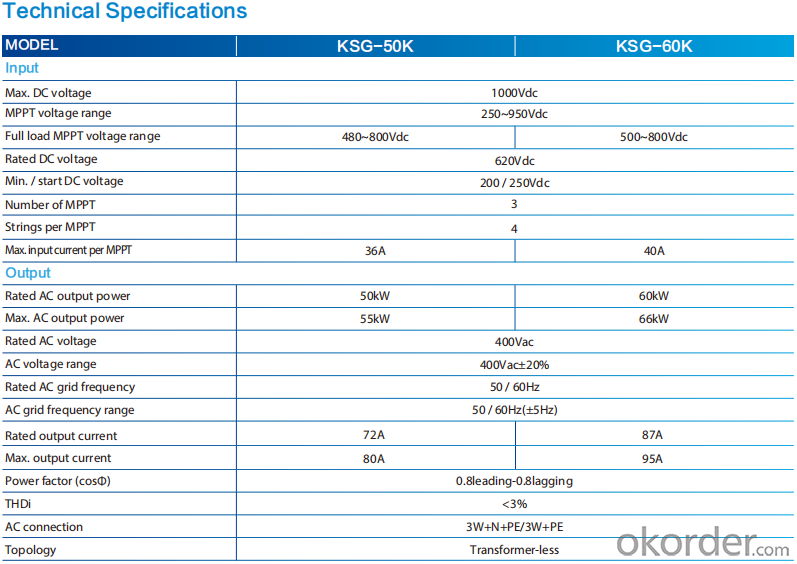
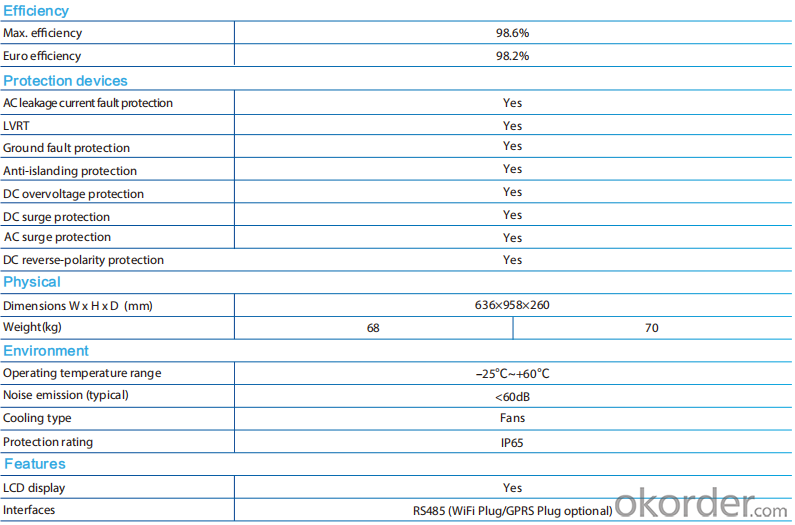
FAQ:
Q:How the output voltage of the PV inverter and the grid-connected voltage are determined
Inverter is the DC power (battery, battery) into alternating current (usually 220V, 50Hz sine wave). It consists of inverter bridge, control logic and filter circuit. Widely used in air conditioning, home theater, electric wheel, power tools, sewing machines, DVD, VCD, computer, TV, washing machine, range hood, refrigerator, video recorders, massage, fan, lighting and so on. In foreign countries
Q:Installation and maintenance of photovoltaic grid - connected inverter
only when the local power sector permission by the professional and technical personnel to complete all the electrical connection before the inverter can be connected.
Q:What is the difference between a PV grid-connected inverter and an off-grid inverter?
Off-grid inverter is equivalent to their own to establish an independent small power grid, mainly to control their own voltage, is a voltage source.
Q:After the PV inverter, how to achieve the same period before the network?
Solar panel simulator: with MPPT function, simulated morning, noon, afternoon, evening, rainy weather, solar panels produced under different conditions in different voltages.
Q:Is the PV inverter a current source or a voltage source?
According to the waveform modulation method can be divided into square wave inverter, stepped wave inverter, sine wave inverter and modular three-phase inverter.
Q:Photovoltaic grid-connected inverter without DC emc how will happen
Solar photovoltaic power generation technology is the use of solar cells, the photovoltaic effect of semiconductor materials, solar radiation can be directly converted into a new type of power generation system, solar energy is a radiant energy, solar power means --- to direct conversion of sunlight Into electricity,
Q:What is the difference between low voltage grid connection and medium voltage grid connection?
For photovoltaic power plants when the power system accidents or disturbances caused by photovoltaic power plant grid voltage drop, in a certain voltage drop range and time interval, the photovoltaic power plant can ensure that non-off-line continuous operation.
Q:Is the grid side of the grid and the inverter?
The grid load side of the grid is the grid. The inverter is an important part of the PV grid-connected system and can not be regarded as an external load. Photovoltaic power generation system is included in both grid and off-grid.
Q:PV grid-connected inverter and independent inverter in the control of what is the difference
The independent inverter in the output voltage phase amplitude of the frequency control is initially set good. Independent inverter, you should refer to off-grid inverter, do not need to consider the grid situation.
Product Images:
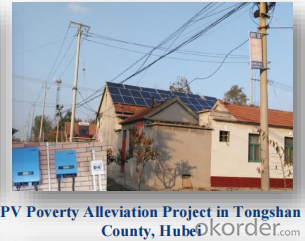
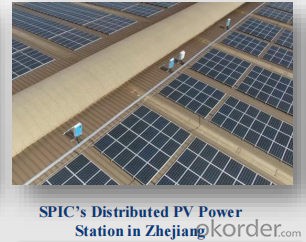
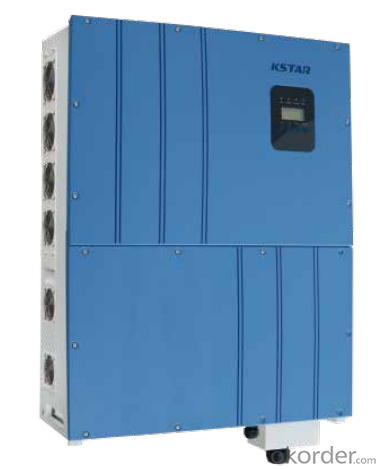
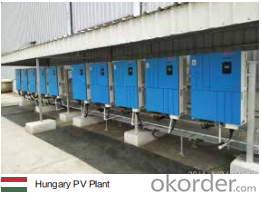



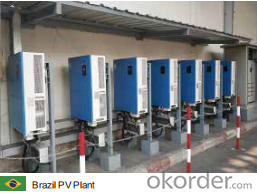
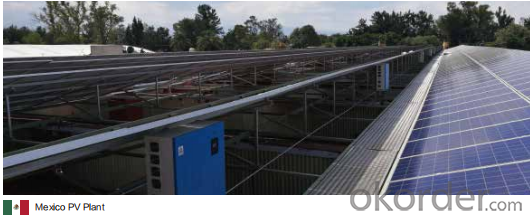
Production Process Photos:

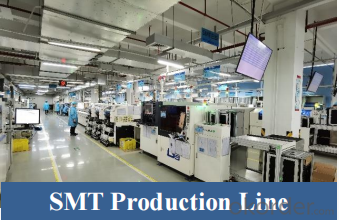
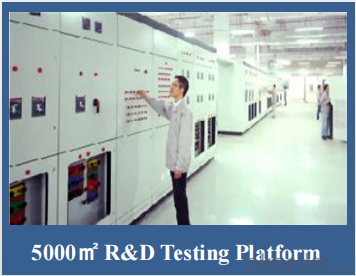
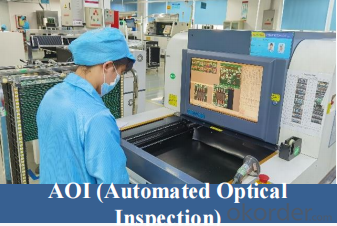
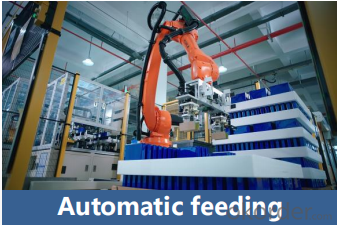
- Q: What is the impact of temperature on the performance of a solar inverter?
- The impact of temperature on the performance of a solar inverter is significant. As temperature increases, the efficiency of the inverter tends to decrease. This is because higher temperatures can lead to increased resistive losses, increased internal losses, and decreased power conversion efficiency. Additionally, overheating can cause the inverter to shut down or operate at reduced capacity to prevent damage. Therefore, it is important to consider temperature management and cooling strategies to optimize the performance and lifespan of a solar inverter.
- Q: Can a solar inverter be used with different types of grounding systems?
- Yes, a solar inverter can be used with different types of grounding systems. Most solar inverters are designed to be compatible with various grounding configurations, including but not limited to grounded, ungrounded, and impedance grounded systems. However, it is important to consult the manufacturer's specifications and guidelines to ensure proper installation and compatibility with the specific grounding system in use.
- Q: What are the different output waveforms of a solar inverter?
- The different output waveforms of a solar inverter include sine wave, modified sine wave, and square wave.
- Q: The working principle of photovoltaic grid - connected inverter
- Full-bridge inverter circuit to overcome the shortcomings of the push-pull circuit, the power transistor to adjust the output pulse width, the output AC voltage RMS that changes. Since the circuit has a freewheeling circuit, even if the inductive load, the output voltage waveform will not be distorted. The disadvantage of this circuit is that the upper and lower arms of the power transistor are not common, so you must use a special drive circuit or use isolated power supply. In addition, in order to prevent the upper and lower arm co-conduction, must be designed to turn off after the conduction circuit, that must be set dead time, the circuit structure is more complex.
- Q: How does a solar inverter handle power quality issues in the grid?
- A solar inverter helps to handle power quality issues in the grid by continuously monitoring the voltage and frequency of the grid. If it detects any variations or deviations from the standard levels, it adjusts its own output accordingly to maintain a stable and reliable power supply. Additionally, some advanced solar inverters also incorporate features like power factor correction and voltage regulation to further enhance power quality and ensure efficient utilization of the solar energy generated.
- Q: Can a solar inverter be connected to a battery backup system?
- Yes, a solar inverter can be connected to a battery backup system. In fact, this connection is essential for storing excess solar energy generated during the day and using it during times when the sun is not shining, such as at night or during power outages. The battery backup system allows for uninterrupted power supply and greater energy independence.
- Q: How is a solar inverter connected to the solar panels?
- A solar inverter is connected to solar panels through a direct current (DC) connection. The DC power generated by the solar panels is sent to the inverter, which converts it into alternating current (AC) power that can be used to power electrical devices or be fed into the grid.
- Q: How is a solar inverter different from a regular inverter?
- A solar inverter is specifically designed to convert the DC (direct current) electricity generated by solar panels into AC (alternating current) electricity that can be used to power household appliances and be fed back into the grid. On the other hand, a regular inverter is generally used to convert DC power from batteries or other sources into AC power. Therefore, the main difference lies in their purpose and the source of the DC electricity they handle.
- Q: What is the difference between a PV inverter and a solar inverter?
- Instability, the wind speed and the equipment itself will directly affect the generator rotation, so the voltage and current fluctuations, frequency instability, in short, is the power quality is poor) Therefore, through the inverter after the first rectification inverter to improve the quality of power
- Q: How does a solar inverter handle reactive power injection into the grid?
- A solar inverter handles reactive power injection into the grid by utilizing power factor correction techniques. It actively monitors the grid's voltage and adjusts the reactive power output to maintain a desired power factor. This ensures efficient energy transfer and minimizes any negative impacts on the grid's stability and power quality.
Send your message to us
Solar String Grid-Tied PV Inverter KSG-50K / KSG-60K
- Loading Port:
- China main port
- Payment Terms:
- TT OR LC
- Min Order Qty:
- 50 pc
- Supply Capability:
- 15000 pc/month
OKorder Service Pledge
OKorder Financial Service
Similar products
Hot products
Hot Searches
Related keywords
